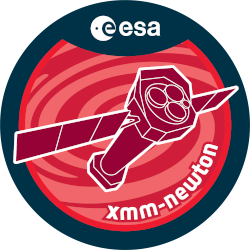

| Proposal ID | 072265 |
| Title | Detailed Multiwavelength Study of the Late-Time Evolution of SN 1978K |
| Download Data Associated to the proposal | https://nxsa.esac.esa.int/nxsa-sl/servlet/data-action-aio?obsno=0722650101 |
| DOI | https://doi.org/10.5270/esa-3gjoi64 |
| Principal Investigator, PI | Dr Ian Smith |
| Abstract | SN 1978K in the barred spiral galaxy NGC 1313 is a remarkable supernova. It is arare Type IIn that remains bright at X-ray through radio wavelengths over 30years after its explosion. Our ongoing multiwavelength observations probe thedense medium that was ejected by the progenitor star, possibly a Luminous BlueVariable. Our previous XMM-Newton studies discovered the X-ray emission has beencoming from two shocks in regions that may have a large abundance of helium.While the radio flux has been dropping, the X-ray and UV/optical fluxes haveremained surprisingly constant. Here we request a 100 ksec observation tocontinue the detailed spectral evolution study. As secondary science, we willobtain data on the ULXs X-1 and X-2, and the other luminous sources in NGC 1313. |
| Publications |
|
| Instrument | EMOS1, EMOS2, EPN, OM, RGS1, RGS2 |
| Temporal Coverage | 2013-06-08T05:21:44Z/2013-06-08T13:53:41Z |
| Version | 17.56_20190403_1200 |
| Mission Description | The European Space Agencys (ESA) X-ray Multi-Mirror Mission (XMM-Newton) was launched by an Ariane 504 on December 10th 1999. XMM-Newton is ESAs second cornerstone of the Horizon 2000 Science Programme. It carries 3 high throughput X-ray telescopes with an unprecedented effective area, and an optical monitor, the first flown on a X-ray observatory. The large collecting area and ability to make long uninterrupted exposures provide highly sensitive observations. Since Earths atmosphere blocks out all X-rays, only a telescope in space can detect and study celestial X-ray sources. The XMM-Newton mission is helping scientists to solve a number of cosmic mysteries, ranging from the enigmatic black holes to the origins of the Universe itself. Observing time on XMM-Newton is being made available to the scientific community, applying for observational periods on a competitive basis. |
| Creator Contact | https://www.cosmos.esa.int/web/xmm-newton/xmm-newton-helpdesk |
| Date Published | 2014-06-20T00:00:00Z |
| Last Update | 2025-08-04 |
| Keywords | "XMM", "luminous sources", "ngc 1313", "XMM-Newton", "radio flux", "NGC 1313", "optical fluxes", "ulxs x", "radio wavelengths", "xmm newton", "secondary science", "spectral evolution", "luminous blue variable", "remained surprisingly constant", "dense medium", "progenitor star", "rare type iin", "xray emission" |
| Publisher And Registrant | European Space Agency |
| Credit Guidelines | European Space Agency, Dr Ian Smith, 2014, 'Detailed Multiwavelength Study of the Late-Time Evolution of SN 1978K', 17.56_20190403_1200, European Space Agency, https://doi.org/10.5270/esa-3gjoi64 |